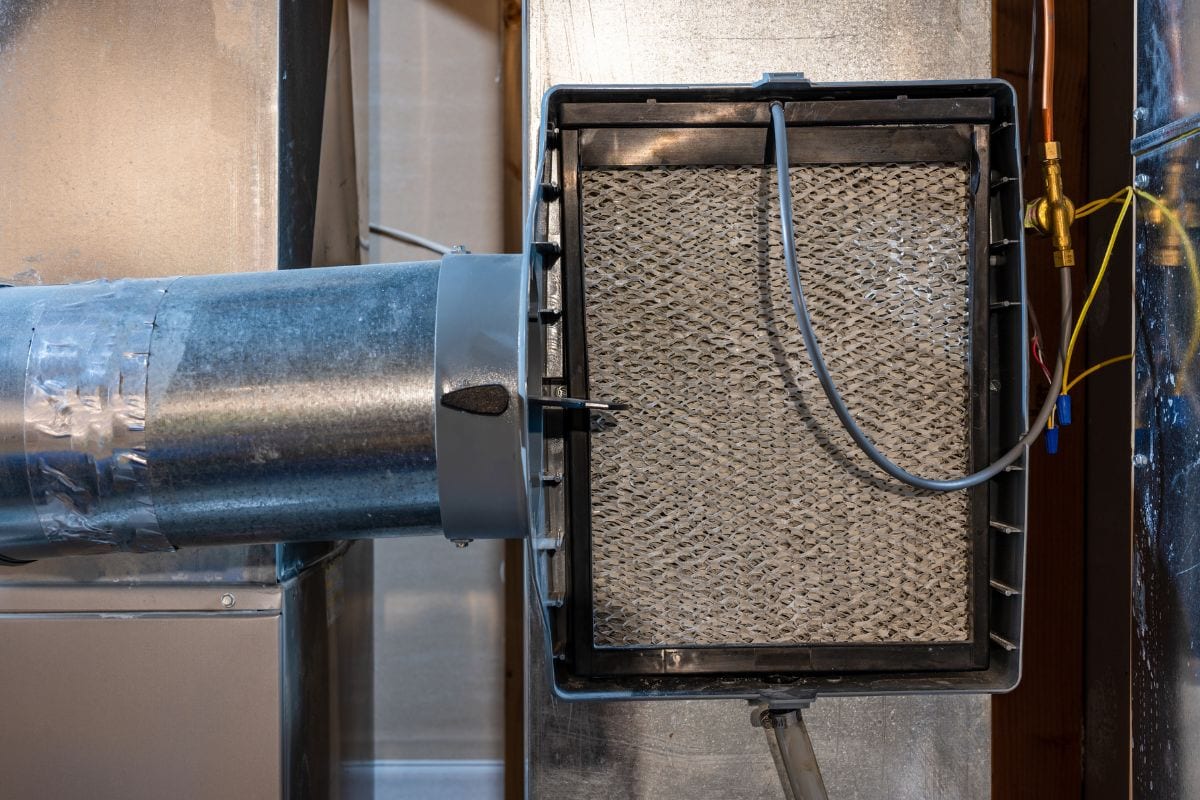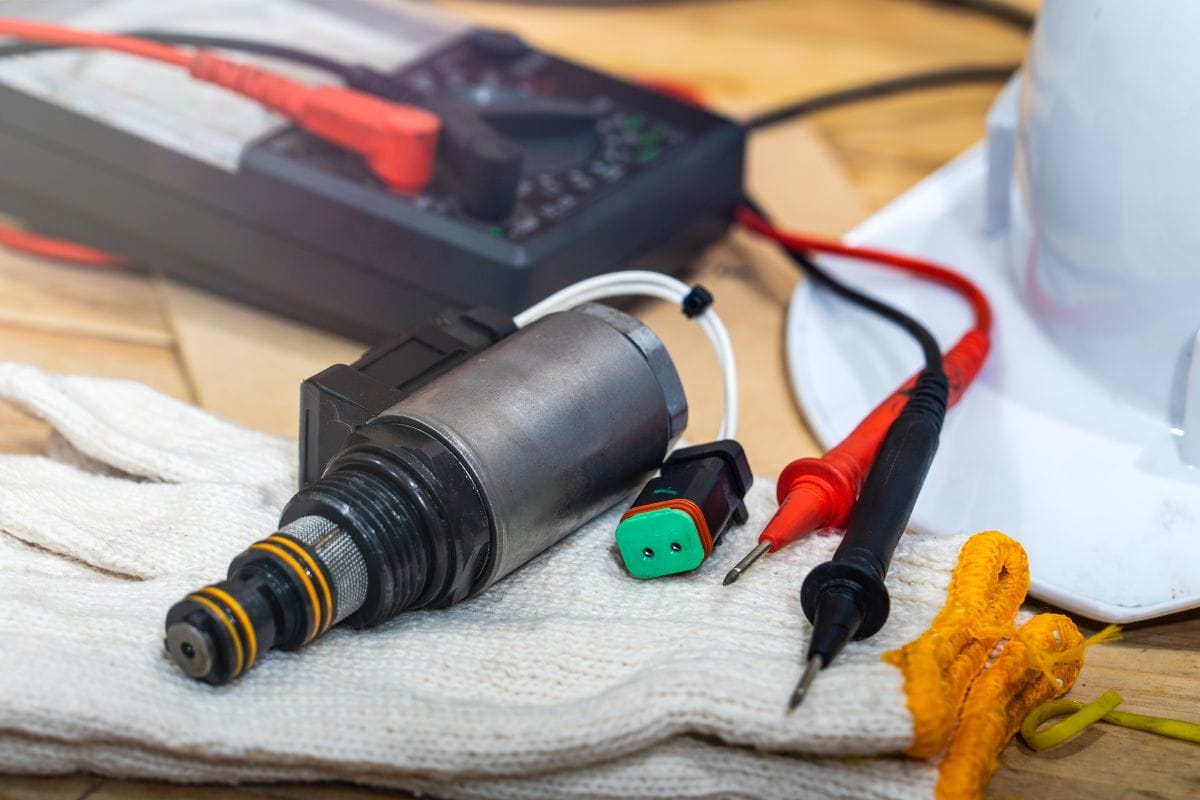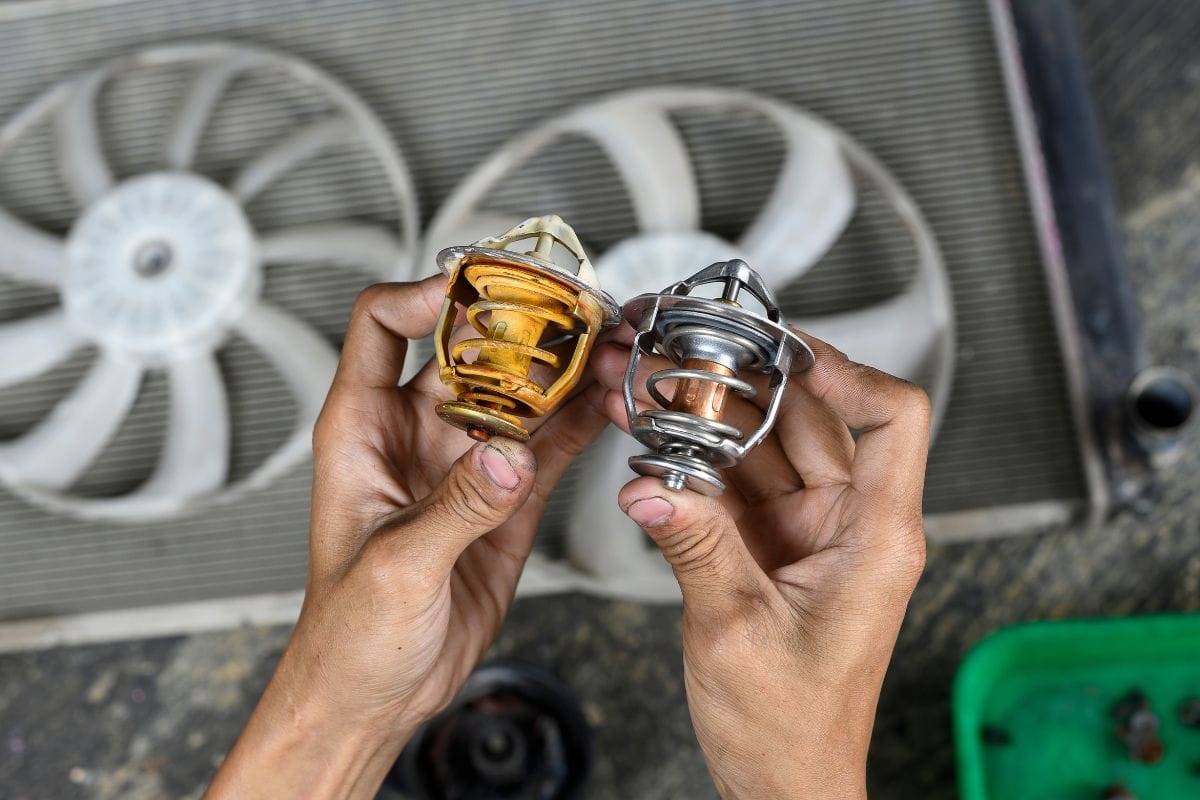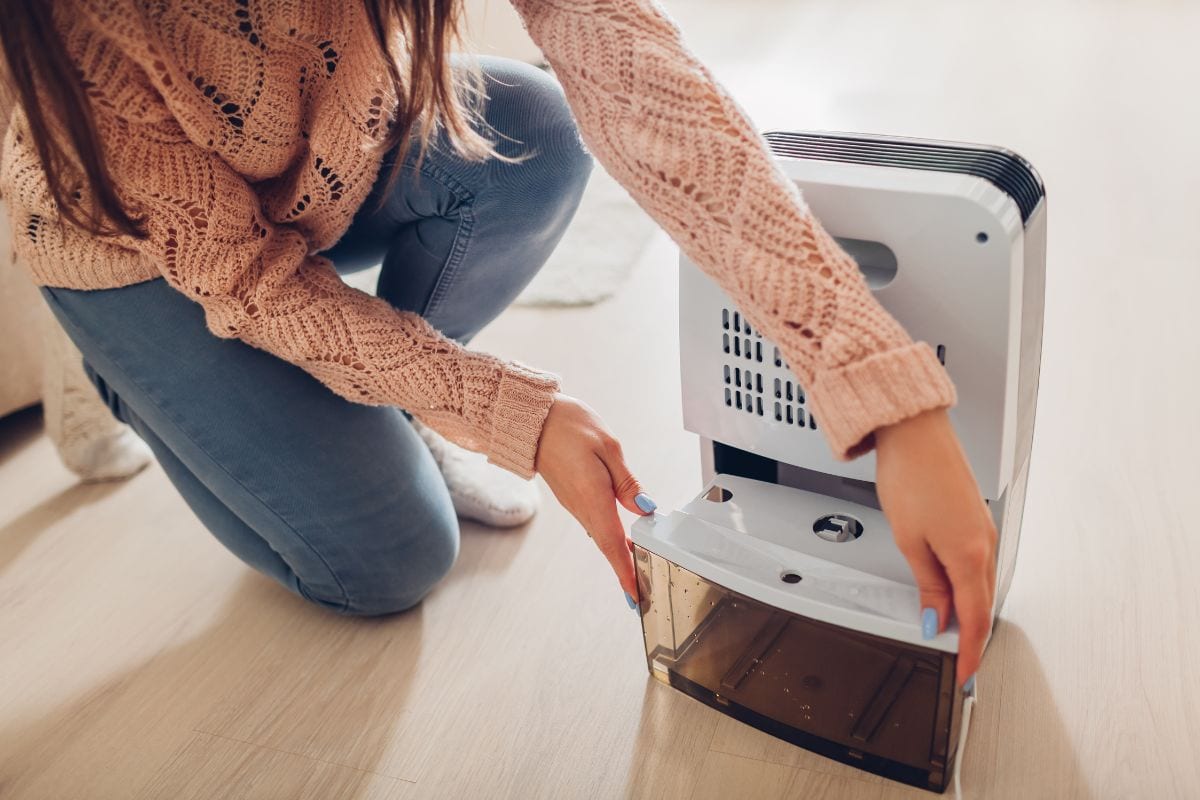If you want to find out why your humidifier isn't working, one of the parts that you should check is the solenoid valve. If you need help with how to do it, you've landed on the right page. We've researched the proper way to test the solenoid valve to share with you!
To test a humidifier solenoid valve, you need to:
- Turn on the furnace and humidistat.
- Attach a multimeter to the wires that connect the humidistat to the solenoid valve.
- Turn the humidistat on and off and check the register on the multimeter.
- If there's no problem with the humidistat, then the issue is with the solenoid valve.
Keep reading for a more detailed guide on testing your solenoid valve. We'll also teach you how to repair and replace it. Lastly, we'll let you know what the ideal indoor humidity level is. Let's get to work!
![Solenoid valve, ball bearing, multimeter on wooden table. - How To Test Humidifier Solenoid [Step By Step Guide]](https://hvacseer.com/wp-content/uploads/2022/12/Solenoid-valve-ball-bearing-multimeter-on-wooden-table.-How-To-Test-Humidifier-Solenoid-Step-By-Step-Guide.png)
How do you test a solenoid on a humidifier?

A humidifier can be a household essential, especially during the colder months when the air gets too dry. It increases the moisture level in the air so that you'll be more comfortable. Low humidity can cause dry eyes, nose, skin, and hair. It also makes you more susceptible to colds and other respiratory issues.
That's why it is important to turn your humidifier on so that you can enjoy optimal humidity levels inside your home and reap its benefits.
Knowing how to troubleshoot your humidifier also helps a lot. You don't have to call an electrician right away if you know what to look out for and how to fix it. This way, you can have your humidifier back in good working condition in no time without having to pay labor fees.
If the humidity level in your home is still low despite using a humidifier, you should go and check what's wrong with the device. The solenoid valve is one of its main components. It opens and closes as needed to maintain the ideal humidity level in the house.
The solenoid valve opens to allow water from the reservoir to flow to the humidifier's evaporator system so that it can add moisture to the air. Otherwise, the valve has to stay shut when the desired humidity is already achieved so that no water can flow out of the reservoir.
The humidistat controls whether the solenoid valve will open or close by sending aa current to it. It detects the humidity level in the room and once it senses that it is below the ideal range, it tells the valve to open. Once the desired level is achieved, it'll direct the valve to close.
If you suspect a faulty solenoid because you noticed that the water from the reservoir doesn't reach the main unit, here's what you can do to confirm. Don't worry, it's easy enough to do. All you need is a multimeter and a Phillips screwdriver to get the job done. It would also help to familiarize yourself with the different humidifier parts so go through them on your owner's manual or manufacturer's website.
Check out this multimeter on Amazon.
Testing The Solenoid

Follow these steps to confirm if your solenoid valve is defective.
- First, program your thermostat to a lower temperature. This will in turn activate your furnace and humidistat.
- Attach the multimeter to the two wires that connect the humidistat to the solenoid valve.
- Manually turn off the humidistat.
- Check the register on the multimeter. There should be no voltage at this time since the humidistat is off.
- Turn on the humidistat and choose a high humidity level like 90%. This will activate the humidifier.
- Check the multimeter to see if there's voltage. It should register around 24V. If there's no continuity, then the problem is with the humidistat.
- But if the multimeter reads 24V, check if water is flowing from the reservoir to the humidifier's evaporator system. If it's not, then you have a problem with your solenoid valve.
Now that you've confirmed that the solenoid valve is the one acting up and not the humidistat, you can concentrate on troubleshooting this component.
Repairing Your Solenoid Valve
Now that you know the solenoid valve is the issue, here's what you need to do to have it fixed.
You have to remove the solenoid valve from its position. Unscrew it with the use of a Phillips screwdriver. Set aside the screws and inspect the solenoid valve carefully.
Look for any rusting, dirt, or debris that may be clogging the water flow. If anything is blocking the way, then water won't be able to pass through the valve to make it to the humidifier's evaporator system. Without water, the system won't have anything to work with since they need to spray water droplets on the air to increase the moisture or humidity level. Clean the interior of the solenoid valve.
Once you've cleared the valve of any unwanted particles, put it back in place. This time, manually turn on the humidifier and check if the water will flow out of the solenoid valve. If it still doesn't work, you must replace your solenoid valve with a new one.
How to Replace a Solenoid Valve

It's a good thing that this component can be replaced. You can check your owner's manual for the specifications that you need and look for it in the market or order online. Make sure you buy a solenoid valve that's compatible with your humidifier so that it'll run smoothly.
Now, here's what you need to do to replace a solenoid valve. Again, we recommend you check your owner's manual or manufacturer's website to familiarize yourself with the different parts of the humidifier so you'll know your way around.
Tools and Materials Needed
- new solenoid valve
- Phillips screwdriver
- adjustable wrench
- small bucket or plastic container
- zippered bag
Find this set of Phillips screwdrivers on Amazon.
Procedure:
- For safety purposes, disconnect your humidifier or turn off the power source it pulls from.
- You also need to turn off the water supply line that brings water to your humidifier's reservoir.
- Locate the solenoid valve and expose the wires.
- Unscrew the compression nut to remove the distributor tube. Use your adjustable wrench for this.
- Drain excess water on your bucket or plastic container.
- Look for the water supply line and disconnect it from the humidifier. Drain excess water on your container.
- Loosen the screws connecting the solenoid valve to the humidifier with the use of a Phillips screwdriver.
- Set aside the old valve. Put the old screws and unit in a zippered bag and dispose of them properly.
- Position the new solenoid valve in its proper place.
- Screw it in place.
- Reconnect the water supply line and distributor tube.
- Fasten the compression nut tightly.
- Connect the electrical wires to the new solenoid valve.
- Turn on the humidifier's water line. Check if there are any leaks. Tighten the connection if there are leaks.
- Turn the power back on.
That's it! You now know how to replace an old solenoid valve with a new one. Simple, isn't it? You don't have to spend extra bucks on the labor cost since you can do it yourself.
Here's a video for a humidifier solenoid valve replacement for your reference.
What is the healthiest humidity level for a home?

This is a common question! Experts recommend that the indoor humidity level should only range from 30% to 50%. This means that your indoor air should only hold up to 50% moisture level. If it exceeds this level, you will encounter moisture issues at home and related health concerns.
But it also isn't advisable for the air to get too dry. As mentioned earlier, it can make you uncomfortable and cause dryness and irritation to your skin and body. Wood furniture can also crack and get damaged when the humidity level is too low. As such, you need to program your humidistat to not allow moisture levels to drop below 30%.
You can also get a hygrometer to monitor the humidity in your home. This is helpful, especially for those with allergies, asthma, and respiratory issues. This way, you can ensure that the humidity at home stays at a healthy level.
Click this link to find this hygrometer on Amazon.
Final Thoughts
Knowing how to test your humidifier solenoid will help you determine what's wrong with your humidifier right away. This will eliminate the guesswork on how to put it back in order and it's so easy to do, you can have it fixed all by yourself.
Feel free to visit the following links for some related reading:
How To Clean Humidifier Without Vinegar [Step By Step Guide]



